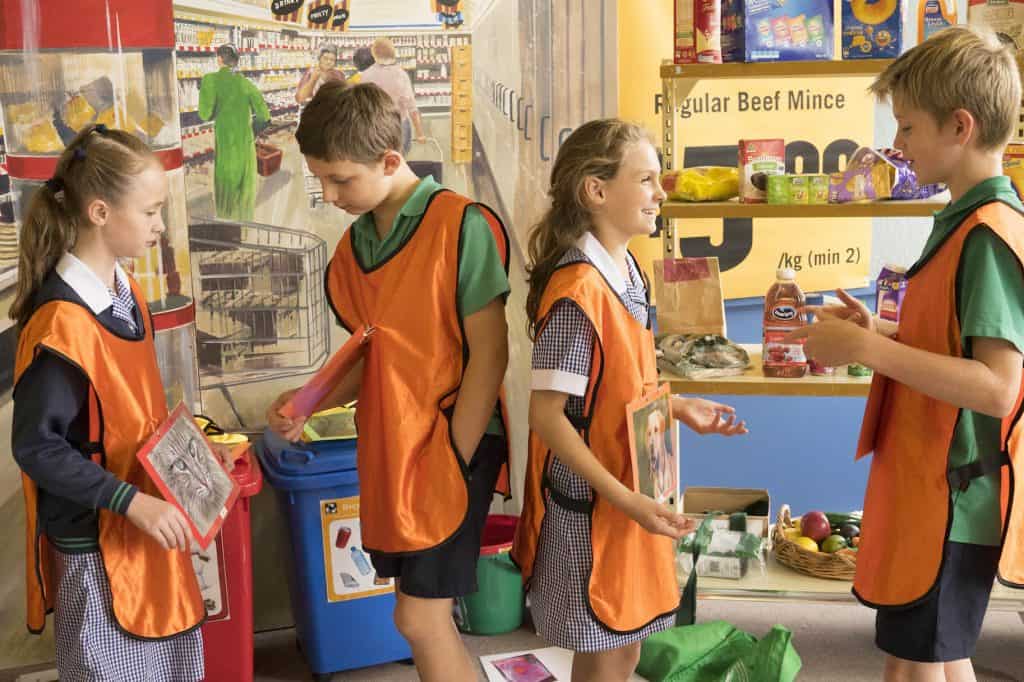Natural Links
-
Food Webs
-
Worms & Compost
-
Human Impacts
-
Species Interactions

Program Overview
Planet Earth is a complex environment that relies on delicate links and sophisticated relationships between living and non-living elements. This program gives students the opportunity to classify natural objects and organisms while exploring the interconnectedness and importance of a balanced environment. Students learn about human impacts and create actions for your school to support positive change.
This program can be tailored to suit different levels of understanding, from topic introduction through to topic consolidation.
Program Options and Activities
There are two options for this program. The 2hr program includes three activities listed below (selected upon booking). The 4hr program includes all five activities.
Habitats and Survival
Discover what birds and animals need to survive, then explore the gardens surrounding the Sustainability Centre and examine how the plants and animals are interconnected.
Classification
Explore the characteristics and differences between living, previously living and non-living elements within a habitat through a hands-on classification activity.
Compost Bin & Worms
Travel through our ‘Incredible Shrinking Machine” into our giant compost bin and explore the relationship between invertebrates and our food waste, meet our friendly earth worms (unclose and personal) and discover life that exists in our soil and the importance of soil healthy for food production and wellbeing.
Food Webs & Interconnectedness
Examine the complex relationships in nature across three continents during an interactive food web game.
Symbiosis & Species Interactions
Identify common symbiotic relationships found in nature, both aquatic and terrestrial environments, with a practical pairing activity.
Both programs conclude with:
Humans Impacts & Call to Action
Students will lead a discussion about how natural links are affected and/or disrupted by human activities and derive actions they can adopt to minimise their impact on the environment.
Certificate and Conservation Code to reinforce learnings
Post event, schools will be issued a Certificate of Participation and Conservation Code for each class which students are encouraged to sign and hang in the classroom as a reminder of their learnings and their commitment to protect the environment.
We encourage schools to connect with us a few weeks or months after school excursions to share behaviour changes made by the students or activities undertaken as a result of their learnings during their program so we can share success stories to inspire others, monitor the ongoing impact of our programs and make relevant updates or changes if required.
Restrictions: More than 4 classes can be accommodated by special request.
Victorian Curriculum Links
SCIENCE: Science Understanding – Biological Science
– Living things can be grouped on a basis of observable features and can be distinguished from non-living things (VCSSU057)
– Different living things have different life cycles and depend on each other and the environment to survive (VCSSU058)
GEOGRAPHY: Geographical Knowledge – Diversity and significance of places and environments
– Similarities and differences in individuals and groups feeling and perceptions about places, and how they influence views about the protection of these places (VCGGK083)
The Victorian Curriculum F-10 content elements are © VCAA, reproduced by permission. Victorian Curriculum F-10 elements accurate at time of publication. The VCAA does not endorse or make any warranties regarding this resource. The Victorian Curriculum F-10 and related content can be accessed directly at the VCAA website.
